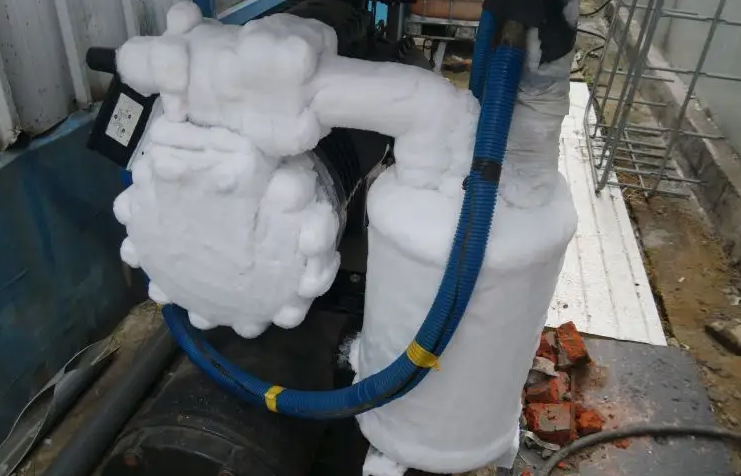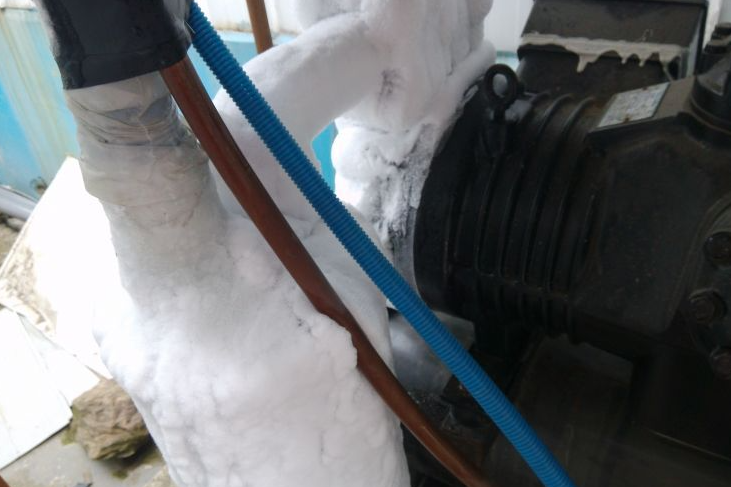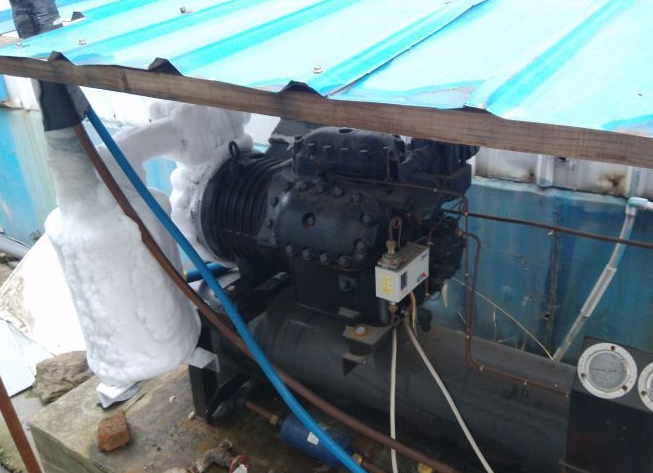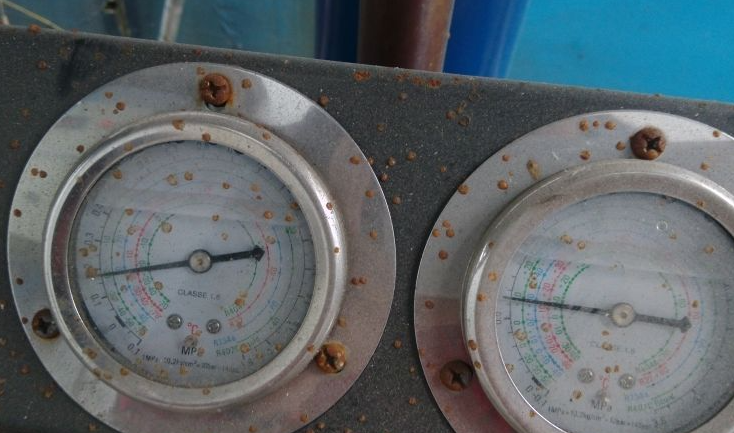Frosting at the return air port of the cold storage compressor is a very common phenomenon in the refrigeration system. In general, it will not immediately form a system problem, and small frosting is usually not dealt with. If the frost phenomenon is more serious, then the first need to clear the cause of frost
First, the compressor air return port frosts
Frosting at the return air inlet indicates that the return air temperature of the compressor is too low. Then what will cause the return air temperature of the compressor to be too low?
The same mass of refrigerant, if the volume and pressure change, the temperature will have different performance. If the compressor return temperature is low, it will generally show low return gas pressure and high refrigerant volume of the same volume at the same time. The root of this situation is that the refrigerant flowing through the evaporator can not fully absorb the heat required by its expansion to the predetermined pressure temperature value.

There are two causes of this problem:
- The throttle liquid refrigerant supply is normal, but the evaporator can not absorb heat normally;
- the evaporator heat absorption works normally, but the throttle refrigerant supply is too much, that is, the refrigerant flow is too much, we usually understand that the refrigerant is much.
Second, due to less fluorine caused by the compressor return gas frosting
1. because the flow of the refrigerant is very small
Too little refrigerant expansion will not make use of the whole evaporator area, and will only form low temperature in the evaporator. In some areas, due to the small amount of refrigerant and rapid expansion, the local temperature is too low, and the evaporator frost phenomenon appears.
After local frosting, due to the formation of a heat insulation layer on the surface of the evaporator and the low heat transfer in this area, the refrigerant expansion is transferred to other areas, and gradually the whole evaporator frosting or icing phenomenon, the whole evaporator formed a heat insulation layer, so the expansion will spread to the compressor return pipe leading to compressor return gas frosting.
2.due to the small amount of refrigerant
Low evaporation pressure in the evaporator leads to low evaporation temperature, which will gradually lead to condensation in the evaporator to form a heat insulation layer, and transfer the expansion point to the compressor return gas, resulting in the compressor return gas frosting.
Low evaporation pressure in the evaporator leads to low evaporation temperature, which will gradually lead to condensation in the evaporator to form a heat insulation layer, and transfer the expansion point to the compressor return gas, resulting in the compressor return gas frosting.

The above two points will show the evaporator frosting before the compressor return air frosting.
In fact, in most cases for frost phenomenon, as long as the adjustment of the hot gas bypass valve. The specific method is to open the rear end cover of the hot gas bypass valve, and then use the No.8 hex wrench to turn the adjusting nut inside clockwise. The adjustment process is not too fast. Generally, it will be paused after half a turn, and the system will run for a period of time to see the frost situation before deciding whether to continue adjusting. When the operation is stable and the frosting phenomenon of the compressor disappears, tighten the end cover.
Third cylinder head frosting (serious crankcase frosting)
Cylinder head frosting is caused by a large amount of wet steam or refrigerant suction compressor. The main reasons for this are:
- The opening of the thermal expansion valve is too large, and the installation of the temperature sensing package is wrong or fixed loosely, so that the felt temperature is too high and the spool is abnormally opened.

The thermal expansion valve uses the superheat at the evaporator outlet as the feedback signal to generate a deviation signal after comparing it with the given superheat value to adjust the refrigerant flow into the evaporator. It is a direct acting proportional regulator, which integrates the transmitter, regulator and actuator.
According to different balance modes, thermal expansion valves can be divided into:
Internal balanced thermal expansion valve;
External balanced thermal expansion valve.
The thermal expansion valve is opened too much, the temperature sensing package is installed incorrectly or fixed loosely, so that the felt temperature is too high and the spool opens abnormally, causing a large amount of wet steam to be sucked into the compressor, resulting in frost on the cylinder head.
The thermal expansion valve is opened too wide, the temperature sensing package is installed incorrectly or fixed loosely, so that the felt temperature is too high, the spool is opened abnormally, resulting in a lot of wet steam is sucked into the compressor, and the cylinder head is frosted.

- When the liquid supply solenoid valve leaks or stops, the expansion valve is not tightly closed
A large amount of refrigerant liquid has accumulated in the evaporator before starting. This situation is also easy to cause compressor liquid hit!
- Too much refrigerant in the system
The liquid level in the condenser is higher, the condensing heat transfer area is reduced, so that the condensing pressure increases, that is, the pressure before the expansion valve increases, the refrigeration dose into the evaporator increases, the liquid refrigerant cannot be completely evaporated in the evaporator, so the compressor inhales wet steam, the cylinder hair is cold or even frosted, and may cause "liquid blow", and the evaporation pressure will be high.
Post time: Dec-06-2022














